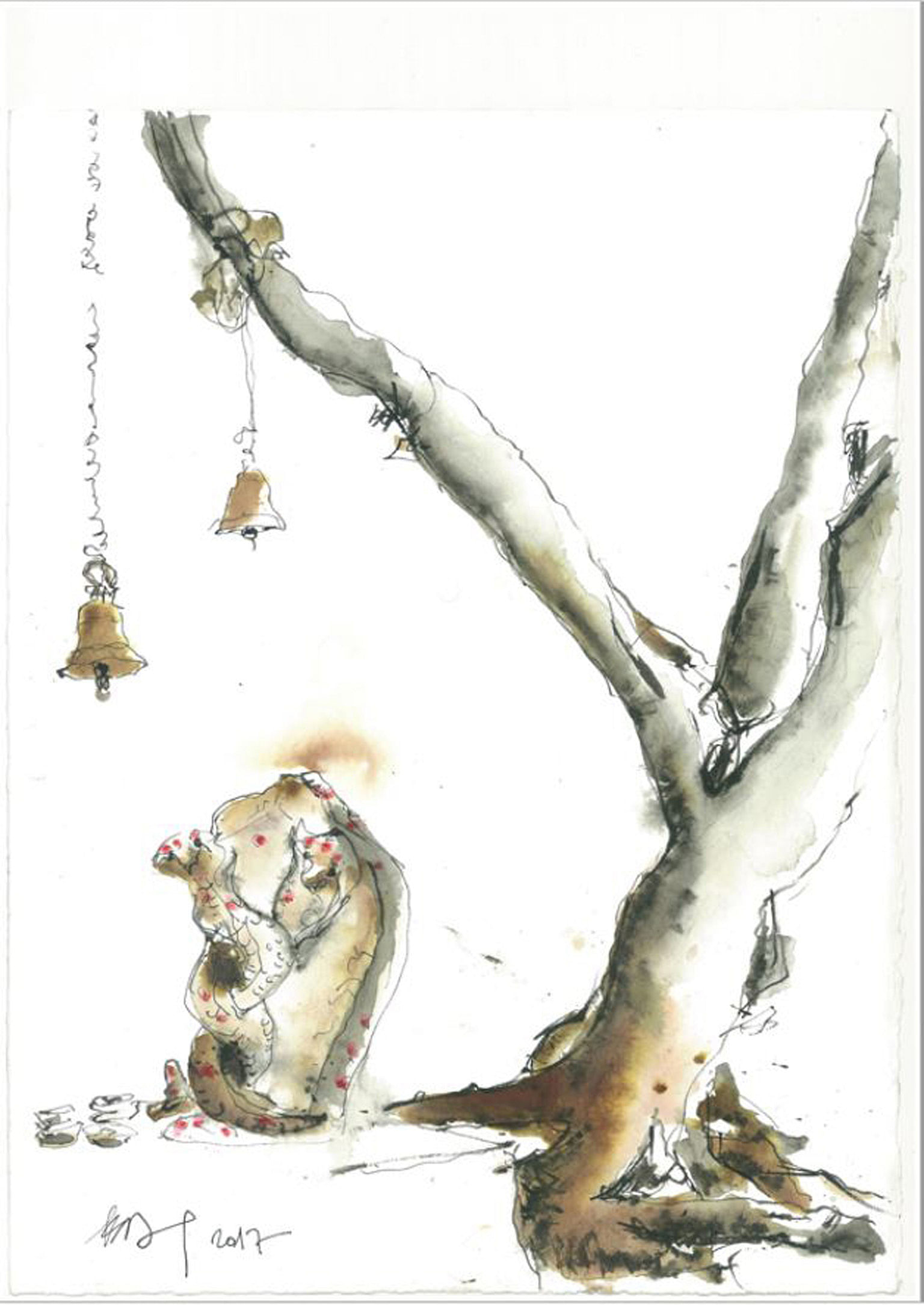WORLD FOCUS
Capital idea: Preserving the past through art in India's Amaravati
S'pore artists capture rural life before farmland makes way for Andhra Pradesh's new capital


with a staircase to the rooftop. PHOTO: EVE TAN




Putting in place the building blocks to erect a new capital city from scratch is no mean feat, but that is precisely what a Singapore consortium is doing in Amaravati, in the Indian state of Andhra Pradesh.
The Ascendas-Singbridge and Sembcorp Development consortium, which has won a 20-year contract to oversee a start-up area in what will become Amaravati's financial district, will set the tone for a complete transformation within the proposed capital city region.
Establishing the new capital for the state is bound to involve some growing pains for the people already living there. But in the case of Amaravati, pride at the prospect of contributing to Andhra Pradesh's development - as well as an expected uptick in land prices - prompted about 26,000 farmers to hand over their land.
An area of 217 sq km is needed for the new city. A total of 29 villages will be subsumed by the capital once it is ready.
Traditionally farmland, the landscape will change from idyllic villages surrounded by lush green fields and verdant plantations into a veritable sea of high-rise buildings, though the plan is to retain some of the green spaces.
Mindful that traditional ways of life in the area will be disappearing for good, a team of artists from Singapore was recently invited to some of the villages in the Amaravati capital region to capture what life was like before the transformation happens.
Among the team of nine sketchers was Mr Benedict Tay, 27, an architectural designer. He told The Straits Times: "Amaravati is still in the making, but there is this undercurrent of change that can be felt as we explored the villages."

Mr Tony Chua, a retired 65-year-old who is a member of artist collective Urban Sketchers Singapore, said: "After spending time with the villagers, I realised that something must be retained at all costs while the new city is being built.
"It is the community spirit, an important cultural element - something in those villages that should not be lost. After all, these villagers have built their relationships over the long years."
Agreeing, mortgage consultant Ignatius Yeo, 58, said: "I would love to see that whatever is there now would be retained, but there is always a price to pay and a trade-off for redevelopment."
He added: "At least I hope none of the historic structures or monuments that are in the way of any redevelopment are destroyed, but rather integrated into the new buildings and/or repurposed."
Another member of the team, Ms Debbie Teo Hwee Lee, 39, noted: "Amaravati has been called the 'rice bowl of India' for good reason, so hopefully the high-density residential planning by Singapore can help retain as much good agricultural land as possible."
The full-time mother and freelance artist is upbeat about the impact Singapore-style planning would have on Amaravati.
"For now, development is a bit on the uneven side in the villages I went to, so good drainage and sanitation system planning will be great for development in the long term."

Ms Eve Tan, who is in her 40s, agreed that the involvement of experts in the planning of the city will have a positive impact.
Asked what could improve in Amaravati, Ms Tan, who works as a freelance project coordinator, an exhibition curator, wardrobe supervisor and set designer, said: "The living environment.

"Houses featured in the sketch of Penumaka do not have a proper sanitation system, which impacts the health of the community. One of the planning (areas) is to have proper toilet facilities. This will help to achieve good sanitation."
Mr James Lim Yew Cheong, a 31-year-old creative designer, added: "The city will be heavily modelled by how Singapore is today, making it an IT hub and a tourist spot.
"Based on the models we saw, it'll be a huge metropolis comparable to Singapore, (with sectors for) entertainment, medical and so on."
The Singaporean sketchers were accompanied by two Indian artists, who also documented life in the area through art.
Dr Sri Vidya Atkuru, 26, a dental surgeon, took inspiration from Singapore for her vision of what Amaravati could become.
"Just as Singapore has managed to retain and develop a green landscape amid its urbanity, I hope the future city of Amaravati also retains the greenery that is present today," Dr Atkuru said.
"I also hope its heritage sites, which include the ancient Undavalli caves, are preserved alongside the modern landscape."
Join ST's Telegram channel and get the latest breaking news delivered to you.
A version of this article appeared in the print edition of The Straits Times on January 09, 2018, with the headline Capital idea: Preserving the past through art in India's Amaravati. Subscribe

